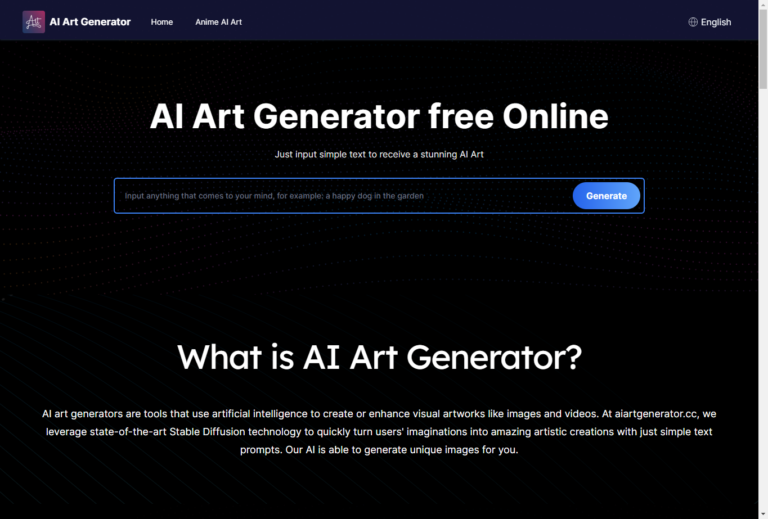
In this article, you will discover the incredibly useful potential of AI for automating tasks. With the continuous advancements in artificial intelligence technology, harnessing its power has become easier than ever before. Whether you are a busy professional looking to streamline your workload or a small business owner seeking efficiency, AI can revolutionize the way you handle repetitive tasks. By learning how to leverage AI effectively, you can save time, increase productivity, and focus on more meaningful aspects of your work. So, let’s explore the possibilities and unlock the full potential of AI automation.
Understand the Use AI To Automate Tasks
The Basics of Artificial Intelligence
Artificial intelligence (AI) refers to the simulation of human intelligence in machines that are programmed to think, learn, and problem-solve like humans. It involves the development of computer systems capable of performing tasks that typically require human intelligence, such as speech recognition, decision-making, and problem-solving.
AI can be classified into two main types: Narrow AI, which is designed to perform specific tasks, and General AI, which has the ability to understand and perform any intellectual task that a human being can do.
Introduction to Task Automation
Task automation involves the use of technology, such as AI, to streamline and optimize repetitive tasks that would otherwise be performed by humans.
By automating these tasks, businesses can improve efficiency, reduce errors, and free up human resources to focus on more complex and strategic activities. AI-based automation systems can analyze data, make decisions, and perform actions without human intervention. This not only saves time and resources but also enables businesses to achieve higher productivity and better outcomes.
Benefits of Using AI for Automation
There are several benefits to using AI for task automation.
Firstly, AI systems can work tirelessly, 24/7, without the need for breaks or rest, thereby improving productivity and reducing the time required to complete tasks.
Secondly, AI-based automation can eliminate human errors, which are often caused by fatigue or distractions, resulting in improved accuracy and quality of work. Furthermore, AI can analyze large amounts of data and provide insights and recommendations in real-time, allowing businesses to make informed decisions quickly. Additionally, by automating repetitive tasks, employees can be freed up to focus on more complex and creative work, leading to increased job satisfaction and motivation.
Identifying Tasks for Automation
Analyzing Task Complexity
Before implementing AI for automation, it is important to analyze the complexity of the tasks involved. Tasks that are highly repetitive, rule-based, and require minimal human judgment are usually good candidates for automation.
On the other hand, tasks that involve subjective decision-making, creativity, and adaptability may be more challenging to automate effectively. By understanding the complexity of tasks, businesses can prioritize their automation efforts and identify areas where AI can provide the most significant benefits.
Assessing the Suitability of AI for Automation
Not all tasks are suitable for AI-based automation. It is important to assess the suitability of AI technologies based on factors such as the availability and quality of data, the level of human expertise required, and the potential risks involved. Tasks that involve the analysis of large amounts of data, pattern recognition, or natural language processing are often well-suited for AI automation. However, tasks that rely heavily on human interaction, empathy, or judgment may require a more hybrid approach combining AI and human input.
Choosing Suitable AI Technologies
Once the tasks suitable for automation have been identified, it is crucial to select the most appropriate AI technologies to achieve the desired automation outcomes. There are various AI technologies available, including machine learning, natural language processing, computer vision, and robotic process automation. The choice of technology depends on the specific requirements and objectives of the automation project. Machine learning, for example, is well-suited for tasks that involve the recognition of patterns or the prediction of outcomes based on historical data. Natural language processing, on the other hand, is useful for tasks that involve speech recognition, text analysis, or language translation.

Preparing Data for AI
Data Collection and Cleaning
Data plays a crucial role in AI-based automation. Before implementing AI models, it is important to collect relevant and representative data that reflects the tasks to be automated. Data collection can involve gathering information from various sources, such as databases, sensors, or user interactions. Once the data is collected, it needs to be cleaned and preprocessed to ensure its quality and reliability. Data cleaning involves removing any errors, outliers, or duplicates that may negatively impact the performance of the AI models.
Data Preparation Techniques
After cleaning the data, it needs to be prepared for training the AI models. Data preparation techniques involve transforming the raw data into a format that can be used by the AI algorithms.
This may include tasks such as feature extraction, dimensionality reduction, or data normalization. Feature extraction involves selecting the most relevant features from the data that can help the AI models make accurate predictions.
Dimensionality reduction techniques, such as Principal Component Analysis (PCA), can be used to reduce the complexity of the data by eliminating redundant or irrelevant features. Data normalization ensures that the data is scaled appropriately to prevent any biases during the training process.
Labeling and Annotation
In some cases, AI models may require labeled data for training purposes. Labeling involves manually annotating the data with relevant tags or categories that represent the desired outputs. For example, in a task involving image recognition, images may need to be labeled with the corresponding object or class they represent. Labeling can be done manually by human annotators or through semi-automated techniques, depending on the complexity and size of the dataset. Accurate labeling is crucial for training AI models effectively and ensuring high-performance automation.
Selecting an AI Model
Types of AI Models
There are various types of AI models that can be used for automation, depending on the nature of the tasks to be automated. Some common types include classification models, regression models, clustering models, and recommendation models. Classification models are used to categorize data into predefined classes or categories. Regression models are used to predict continuous values based on input variables. Clustering models group similar data points together based on their characteristics. Recommendation models provide personalized recommendations based on user preferences and behavior.
Choosing the Right Model for Automation
Choosing the right AI model for automation depends on several factors, including the nature of the tasks, the available data, and the desired automation outcomes. It is important to consider the specific requirements and constraints of the automation project when selecting a model. For example, if the task involves predicting customer sentiment based on social media data, a classification model with sentiment analysis capabilities may be suitable. On the other hand, if the task involves predicting future sales based on historical data, a regression model may be more appropriate. Evaluating the performance and accuracy of different models is essential in selecting the right one for automation.
Evaluating Model Performance
Once the AI model is selected, it is important to evaluate its performance on a test dataset before deploying it for automation. Model performance evaluation involves measures such as accuracy, precision, recall, and F1 score. Accuracy measures how well the model predicts the correct output compared to the actual output. Precision measures the proportion of correctly predicted positive cases out of all predicted positive cases. Recall measures the proportion of correctly predicted positive cases out of all actual positive cases. The F1 score is a combined measure of precision and recall. Evaluating the model’s performance helps identify any shortcomings or areas for improvement before integrating it into the automation workflow.

Training the AI Model
Training Data Preparation
Before training the AI model, the data needs to be divided into training and testing datasets. The training dataset is used to teach the model to make accurate predictions based on the input data. The testing dataset is used to evaluate the model’s performance on unseen data. It is important to ensure that the training dataset is representative of the task to be automated and contains a wide range of examples. This helps the model learn patterns and make accurate predictions on new data. The data preprocessing techniques discussed earlier may also be applied to the training dataset to improve the model’s performance.
Model Initialization
Once the training data is prepared, the AI model needs to be initialized. Model initialization involves setting the initial values or weights of the model’s parameters. The initialization process is crucial as it determines how quickly and effectively the model can learn from the training data. Different initialization techniques can be used depending on the type of AI model being used. For example, in a neural network model, the weights of the neurons can be initialized randomly or using specific initialization algorithms. Proper initialization helps the model avoid getting stuck in local optima and improves the chances of converging to the global optimum during training.
Fine-tuning and Iterative Improvement
After initializing the model, the training process begins. During training, the model learns from the training data by adjusting its parameters to minimize the difference between the predicted outputs and the actual outputs. This process is often iterative, with multiple rounds of fine-tuning and adjustment. The model’s performance is evaluated on the testing dataset at regular intervals to monitor its progress and identify any overfitting or underfitting issues. Overfitting occurs when the model performs well on the training data but fails to generalize to new data. Underfitting occurs when the model fails to capture the underlying patterns in the data. Fine-tuning the model based on performance evaluation helps improve its accuracy and effectiveness in automating tasks.
Integrating AI into Workflow
Integration with Existing Tools and Systems
Integrating AI into the existing workflow involves incorporating AI systems and technologies seamlessly with the tools and systems already in use. This may require developing interfaces or APIs that allow data exchange and communication between the AI systems and other applications. For example, an AI-based chatbot may need to integrate with a customer relationship management (CRM) system to access customer data and provide personalized responses. Integration ensures that the automation process is streamlined and does not disrupt the existing workflow, making it easier for employees to adopt and benefit from AI automation.
Developing AI Interfaces
Developing user-friendly interfaces is crucial for successful AI automation. AI interfaces provide users with a way to interact with and control the AI systems and monitor their performance. Interfaces can be in the form of web applications, mobile apps, or command-line tools, depending on the specific requirements and preferences of the users. The interfaces should be intuitive, easy to navigate, and provide relevant information and insights to users. For example, an AI-based data analytics tool may provide visualizations and interactive dashboards that allow users to explore and analyze data easily. Developing well-designed interfaces promotes user adoption and engagement with AI automation.
Ensuring Compatibility and Scalability
When integrating AI into the workflow, it is important to ensure compatibility and scalability. Compatibility involves ensuring that the AI systems and tools align with the existing infrastructure, technologies, and data formats. This may involve making necessary adjustments or upgrades to the existing systems or adopting new technologies that are compatible with the AI automation process. Scalability refers to the ability of the AI systems to handle increasing volumes of data and tasks as the organization grows. It is important to consider scalability from the early stages of AI implementation to avoid bottlenecks and performance issues in the future. Designing a scalable and compatible AI infrastructure ensures the long-term success and effectiveness of AI automation.
Deployment and Testing
Testing AI Model Performance
Before deploying the AI model for automation, thorough testing is essential to ensure its performance and reliability. Testing involves evaluating the model’s accuracy, robustness, and efficiency on different datasets and scenarios. It is important to test the model on both the training dataset and unseen data to validate its generalization capabilities. Additionally, stress testing can be performed to assess the model’s performance under extreme conditions and evaluate its resilience to errors or anomalies. Testing helps identify and address any issues or shortcomings in the model before it is put into operation, ensuring smooth and successful deployment.
Pilot Deployment and User Feedback
After testing the AI model, it is advisable to deploy it in a pilot environment before full-scale implementation. Pilot deployment involves selecting a smaller subset of users or tasks to test the effectiveness and user acceptance of the AI automation. This allows for real-time monitoring, evaluation, and gathering of user feedback. User feedback is valuable in assessing the usability, performance, and overall satisfaction with the AI automation. It helps identify any areas for improvement or adjustment before scaling up the deployment. Incorporating user feedback into the development cycle promotes user engagement, trust, and collaboration with the AI system.
Optimizing and Scaling AI Infrastructure
Based on the results and feedback gathered during the pilot deployment, optimizations and adjustments can be made to the AI infrastructure. This may involve fine-tuning the AI models, improving data collection and preprocessing procedures, or optimizing the deployment and runtime environments. It is important to continuously monitor and evaluate the performance of the AI infrastructure and identify areas for optimization and scaling. As the automation tasks and datasets grow, the AI infrastructure needs to be able to handle increased volumes of data and tasks efficiently. Optimizing and scaling the AI infrastructure ensures the long-term success and sustainability of AI automation within the organization.
Monitoring and Maintenance
Active Monitoring and Error Handling
Once the AI automation is deployed, continuous monitoring is essential to ensure its smooth operation and detect any issues or errors. Active monitoring involves real-time monitoring of the AI systems, data inputs and outputs, and overall performance. This helps identify any anomalies, errors, or deviations from expected behavior. Active monitoring also enables timely error handling, such as identifying and rectifying data inconsistencies or system failures. Effective error handling ensures minimal disruption and downtime in the automation process, enabling uninterrupted business operations.
Model Updates and Re-training
AI models require regular updates and re-training to maintain their performance and adapt to changing environments or data patterns. As the organization evolves, new data may become available or existing data may change, requiring the model to be updated or retrained. Regular model updates involve incorporating new data, improving algorithms, or adjusting parameters to improve accuracy and effectiveness. Additionally, monitoring the performance of the AI models in real-time helps identify any deterioration in performance or emerging issues that may require model updates. Regular model updates and re-training ensure that the AI automation remains up-to-date and optimized for the tasks at hand.
Addressing Ethical and Bias Concerns
As AI automation becomes more prevalent, ethical considerations and biases need to be addressed to ensure fairness and accountability. AI models can be biased if the training data is biased or if the algorithms inadvertently learn and perpetuate existing biases. It is important to proactively identify and mitigate biases through techniques such as diverse and representative data collection, bias-aware algorithms, and regular audits of the AI automation. Additionally, ethical considerations, such as privacy, transparency, and consent, should be integrated into the AI automation framework. Addressing ethical and bias concerns ensures that AI automation is carried out responsibly and respects the rights and values of individuals and society as a whole.
Measuring AI Automation Success
Defining Key Performance Indicators
Measuring the success of AI automation requires defining relevant key performance indicators (KPIs) that align with the objectives and outcomes of the automation project. KPIs can be quantitative or qualitative measures that assess the impact, efficiency, and customer satisfaction of the automation. For example, KPIs may include cost reduction, error rates, customer response time, or employee satisfaction. Defining clear and measurable KPIs helps track progress, benchmark performance, and evaluate the effectiveness of AI automation over time.
Quantitative and Qualitative Evaluation
To measure the success of AI automation comprehensively, both quantitative and qualitative evaluations are necessary. Quantitative evaluation involves analyzing numerical data and metrics to assess the performance, efficiency, and impact of the automation. This may involve analyzing data such as cost savings, error rates, productivity improvements, or revenue growth. Qualitative evaluation involves gathering feedback from users, employees, and stakeholders to assess their satisfaction, perceived benefits, and overall experience with the AI automation. Combining quantitative and qualitative evaluations provides a holistic view of the success of AI automation and helps identify areas for improvement and further optimization.
Continuous Improvement Strategies
To ensure sustained success and improvement, implementing continuous improvement strategies is essential. Continuous improvement involves analyzing feedback, learning from experiences, and actively seeking opportunities to enhance the automation process. This may involve refining AI models, optimizing data collection and preprocessing techniques, or enhancing user interfaces based on user feedback. Additionally, staying updated with the latest advancements in AI technologies and industry best practices helps identify new opportunities for automation and improvement. By focusing on continuous improvement, organizations can continuously enhance the effectiveness, efficiency, and value of AI automation.
Challenges and Considerations
Data Privacy and Security
With increased reliance on AI and automation, ensuring data privacy and security becomes paramount. AI systems often require access to sensitive data, and organizations must take steps to protect this data from unauthorized access or breaches. Implementing robust data encryption, access controls, and data anonymization techniques helps safeguard sensitive information. Additionally, complying with data protection regulations and industry standards ensures legal and ethical handling of data. Prioritizing data privacy and security safeguards the trust and confidentiality of customer and organizational data.
Ethical Use of AI
As AI continues to play a more significant role in automation, organizations must consider ethical implications and ensure the responsible use of AI. Ethical use of AI involves ensuring fairness, transparency, and accountability in the decision-making processes of AI systems. This includes addressing biases, avoiding discrimination, and providing clear explanations and justifications for AI-generated decisions. Furthermore, organizations must consider the impact of automation on human labor and job displacement, and take steps to minimize negative consequences through re-skilling, up-skilling, or re-allocation of human resources. By prioritizing ethical considerations, organizations can harness the benefits of AI while upholding ethical principles.
Job Displacement and Workforce Impact
One of the key challenges associated with AI automation is the potential impact on the workforce. As tasks become automated, certain job roles may become obsolete, leading to job displacement or a shift in the required skill sets. It is crucial for organizations to proactively address this challenge by providing training and re-skilling opportunities for employees in affected roles. By investing in the development of new skills, employees can adapt to the changing work landscape and take advantage of new opportunities created by AI automation. Organizations can also explore ways to augment human work with AI technologies, creating a hybrid workforce that combines human judgment and creativity with the efficiency and accuracy of AI.
In conclusion, AI automation offers immense potential for organizations to streamline operations, improve efficiency, and achieve better outcomes. From understanding the basics of AI and task automation to identifying suitable tasks and selecting appropriate AI technologies, this comprehensive guide has provided insights into the various stages and considerations involved in leveraging AI for automation. By following best practices in data preparation, model selection, training, integration, deployment, monitoring, and continuous improvement, organizations can successfully harness the power of AI and automation to drive innovation and success. However, challenges such as data privacy, ethical use of AI, and workforce impact must be proactively addressed to ensure responsible and sustainable automation.






